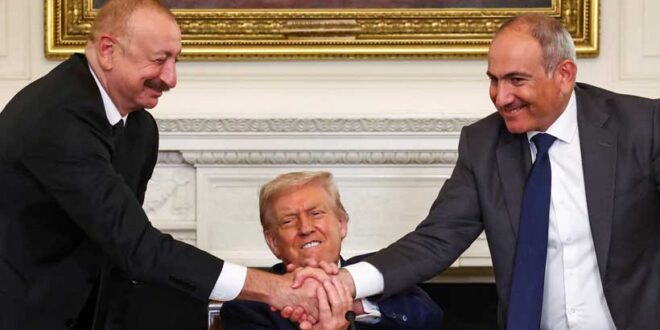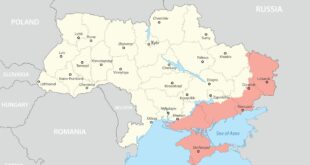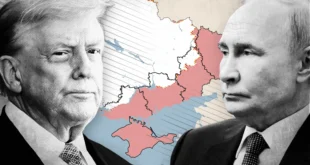On August 8, a historic summit took place in Washington, D.C., with the participation of the President of Azerbaijan, Ilham Aliyev, the President of the United States, Donald Trump, and the Prime Minister of Armenia, Nikol Pashinyan, attracting global attention.
In the U.S. capital, Aliyev, Pashinyan, and Trump signed a joint declaration that can unequivocally be regarded as the beginning of a new era in interstate relations in the South Caucasus. The official declaration reflects the acceptance of all demands put forward by Baku regarding a peace agreement with Yerevan.
The Washington negotiations on establishing peace represent the culmination of developments in Azerbaijani–Armenian relations since 2020. These developments are marked by the successful consolidation of new security arrangements in the South Caucasus—not through an acute military-political crisis, but through diplomacy at the negotiating table.
One of the key elements of the declaration was the approval of a joint appeal by Azerbaijan and Armenia to the OSCE Secretary General for the dissolution of the Minsk Group. Armenia had resisted this step since the cessation of hostilities in Karabakh. For Baku, it was a matter of principle. Until the very end, Yerevan had sought to play the “Minsk Group card” to maintain a degree of international oversight over the Karabakh conflict.
The dissolution of the Minsk Group was one of two conditions set by official Baku for a comprehensive peace treaty. Notably, Baku’s demand was accepted and supported by Washington, one of the three co-chairs of the Minsk Group.
From Azerbaijan’s perspective, the other crucial condition for full peace in this framework is amending the Armenian Constitution. Thus, it can be stated that Baku has secured key decisions on all matters aligned with its national interests. Indirectly, Yerevan has agreed to amend its constitution. The Declaration states that the parties “recognize the necessity of continuing further actions to achieve the signing and final ratification of the Agreement” and underscore the importance of maintaining and strengthening peace between the two countries. This implies that, for the signing of the final peace agreement, “additional measures” will be required—namely, amendments to the Armenian Constitution—before the document can be signed.
Another significant element of the Declaration concerns the opening of logistical routes, which had been long hindered by the influence of third countries and had stalled peace negotiations. From the earliest days after the conflict, Baku had sought progress on this matter, viewing it both as part of broader regional connectivity and as a concrete step toward lasting peace.
As a result of sustained efforts, the Zangezur Corridor is becoming a reality, based on terms ensuring the unhindered movement of citizens, vehicles, and goods in both directions—a position consistently advanced by official Baku. The Declaration includes two provisions on securing unhindered access from mainland Azerbaijan to Nakhchivan via the Zangezur Corridor:
1. “Unhindered communication between the main part of Azerbaijan and the Nakhchivan Autonomous Republic.”
2. Armenia will cooperate with the United States and mutually agreed third parties to develop the conceptual framework for the project “Trump Route for International Peace and Prosperity” (TRIPP) to ensure transport connectivity across Armenian territory.
The “third parties” in this context likely refer to regional actors, particularly Azerbaijan, as one of the main beneficiaries of the route. Although referred to as TRIPP, the project concerns the Zangezur Corridor—unhindered access from Azerbaijan to Nakhchivan.
A central component of the agreements signed at the White House by Pashinyan and Aliyev was the transfer of the Armenian section of the railway to an American company for a 99-year term. The corridor’s initial freight capacity is projected at 8–10 million tonnes annually, rising to 20 million tonnes within five years. This route is expected to yield substantial political, economic, and strategic dividends, reducing logistics costs by up to 35%.
The Zangezur Corridor will be pivotal not only for East–West transport but also for North–South connections, enabling multimodal freight services from Basra to Europe and Central Asia via Turkey, Armenia, and Azerbaijan. The “Trump Bridge” concept integrates seamlessly with the infrastructure of the “Middle Corridor.”
By 2030, annual transit revenues are estimated at USD 1.2 billion for Azerbaijan and USD 900 million for Turkey. Beyond transport, the route offers investment opportunities in logistics centers, warehousing, digital customs infrastructure, and cross-border e-commerce.
The Corridor’s multifunctionality extends well beyond transport. Alongside road and rail, it is envisioned as a strategic conduit for high-capacity fiber-optic cables, oil and gas pipelines, and other critical utilities. This integrated approach will enhance regional energy and digital connectivity, making the corridor a central axis for transcontinental exchanges of goods, resources, and information. By uniting transport, energy, and telecommunication within a single framework, the Zangezur Corridor could serve as a structural backbone for long-term economic integration and geopolitical stability across Eurasia.
Equally significant were the bilateral negotiations between Baku and Washington. Under the Biden administration, U.S.–Azerbaijan relations had deteriorated considerably. Baku pursued a deliberate strategy to rebuild trust with Washington. On the eve of the summit, relations had warmed to the extent that, in the two weeks preceding the meeting, President Trump twice shared excerpts from President Aliyev’s speech at the Third Shusha Global Media Forum.
As a result, a Memorandum of Understanding was signed in Washington, along with a decision to establish a Strategic Working Group for drafting a Charter of Strategic Partnership. Priority areas outlined include regional connectivity in energy, trade, and transit; attracting investment in digital infrastructure and artificial intelligence; and deepening military-political cooperation, including defense product supply and joint counterterrorism.
A major outcome was President Trump’s suspension of Section 907 of the Freedom Support Act, which since 1992 had imposed sanctions on Azerbaijan and restricted U.S. government assistance. Originally initiated by the Armenian lobby in Congress, the amendment’s full repeal remains unlikely in the short term due to procedural hurdles, but its suspension opens new avenues for defense cooperation. As President Aliyev noted, “This step opens access to the most advanced defense technologies and will allow us to diversify our sources of military supply.”
The agreement between Baku and Yerevan marks the first resolution of a frozen conflict in the post-Soviet space since the end of the Cold War. The Karabakh conflict, long emblematic of such disputes, now stands as the first whose resolution could contribute to the eventual disappearance of the “post-Soviet space” as a geopolitical concept.
For Azerbaijan, the Washington summit represents international recognition of its victory, the opening of regional communication channels, deeper engagement with Central Asia, and greater connectivity across the Turkic world. This achievement was made possible above all by the diplomatic skill of President Aliyev. The Trump administration favors strong regional actors that can defend themselves and serve as reliable economic partners. Azerbaijan’s military victory in the 44-day war, combined with its active international engagement, prompted Washington’s support for Baku’s positions.
While the United States’ growing role in the South Caucasus could provoke pushback from Russia and Iran, both will have to adjust to the new realities, respecting red lines and the vital interests of all regional states. Victory in the Second Karabakh War marked the beginning of Azerbaijan’s evolving geopolitical vision, shifting its military-strategic and political-ideological outlook within the regional context.
The Washington meeting can be regarded as a decisive step toward ending a nearly three-decade-long conflict. While the memorandum did not finalize a peace agreement, it laid a concrete foundation for future negotiations.
 Geostrategic Media Political Commentary, Analysis, Security, Defense
Geostrategic Media Political Commentary, Analysis, Security, Defense





